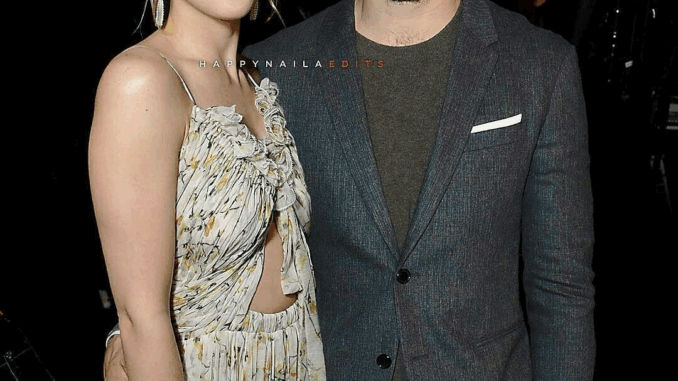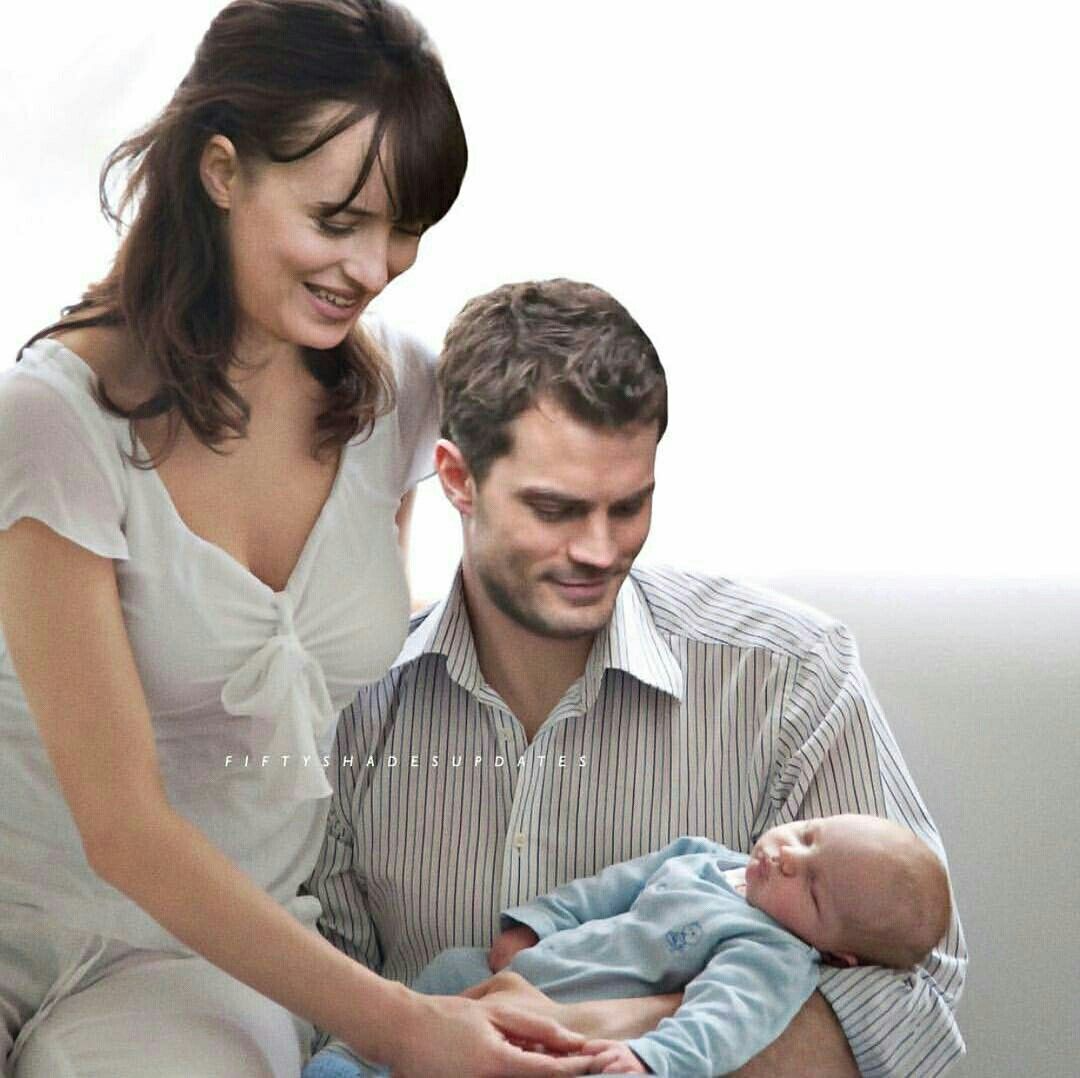
When Jamie Dornan and Dakota Johnson stepped onto the screen as Christian Grey and Anastasia Steele, the world had no idea just how much their pairing would ignite conversations, fantasies, and controversies that refused to fade. What began as a casting decision soon evolved into something that felt bigger than fiction, because audiences could not separate the roles from the real people playing them, and the chemistry they generated appeared to burn far beyond the pages of E.L. James’ bestselling novels. Their relationship on screen was charged with tension, a dangerous mix of attraction and resistance, but off screen it became a story of its own, filled with whispers, denials, humor, frustrations, and an unspoken bond that seemed unshakable even as they denied it publicly.
Jamie Dornan, by all accounts, never wanted to be compared to Christian Grey. He was a devoted husband, a father, a man who preferred privacy to fame, and yet the second he slipped into the billionaire’s tailored suits, fans projected Christian’s darkness and control onto him. He insisted over and over that he was nothing like the character, but people rarely believed him, because when the camera focused on his eyes during the most vulnerable moments, something undeniably real flickered there. Crew members noticed that Jamie often withdrew into silence before intense filming, disappearing into himself as though he needed to summon emotions too personal to share. That quiet intensity convinced many that he carried more of Christian inside him than he admitted, and it only fueled the idea that the lines between character and actor were thinner than anyone wanted to acknowledge.
Dakota Johnson, on the other hand, approached Ana Steele with equal parts bravery and exhaustion. She knew from the beginning that stepping into the role would mean living under a microscope, but nothing could prepare her for the tidal wave of scrutiny that followed. Fans treated her like Ana, tabloids blurred the line between actress and character, and her own relationships became casualties of a franchise that demanded too much intimacy for comfort. Dakota was witty, candid, and unafraid to push back in interviews, often using sharp humor to deflect invasive questions, but even in her strongest moments she admitted that playing Ana sometimes felt like stepping into another person’s cage. That cage was built not only of contracts and props but of the audience’s unrelenting desire to own a piece of her private self.
Together, Jamie and Dakota found themselves trapped in a strange paradox. They had to convince the world of their passion on screen while simultaneously convincing everyone off screen that it was all an illusion. Their love scenes were described by Dakota herself as “choreography,” meticulously planned and stripped of spontaneity, but despite that, something about their performances felt raw and uncontrolled, as though the cameras had captured something deeper than acting. Crew members remembered the atmosphere on set shifting after particularly intense scenes. People moved quieter, laughter was softer, and a heavy silence seemed to hang in the air, as if everyone had witnessed something private they were not supposed to see. That energy spilled into public perception, and soon the question was no longer whether Jamie and Dakota had chemistry but whether that chemistry was too powerful to be faked.
Rumors swirled endlessly. Were they secretly in love? Was Jamie’s marriage under strain because of the way fans perceived his bond with Dakota? Did Dakota struggle to separate herself from Ana because her co-star mirrored Christian in ways he denied? Both actors laughed off the speculation, often leaning on humor to navigate the uncomfortable spotlight, but the rumors refused to die. Jamie’s wife became an unwilling figure in the tabloids, compared constantly to Anastasia Steele, while Dakota’s dating life became almost impossible to conduct privately. Friends revealed that potential partners either fetishized her as Ana or feared the ghost of Christian Grey too much to approach her honestly. It was as though both Jamie and Dakota had been chained to the characters long after the director called cut, their identities blurred with roles they could never quite escape.
What made their connection so compelling was not just the eroticism the franchise promised, but the subtle psychological push and pull between them. Jamie, guarded and careful, seemed to embody Christian’s need for control even when he was not trying, while Dakota, candid and bold, often challenged the narrative around her, echoing Ana’s quiet strength. Their interactions in press tours became spectacles of their own, with Dakota teasing Jamie, Jamie smiling through awkward questions, and both refusing to give the audience a neat story to consume. This refusal only added fuel to the fascination, because it suggested that something existed between them that could not be easily defined or explained away.

The success of Fifty Shades meant they could not escape the shadow of Christian and Ana even as they pursued other roles. For Jamie, it meant constantly answering questions about Christian’s darkness, about whether he secretly enjoyed playing out fantasies of control, about whether he himself was capable of such extremes. For Dakota, it meant battling against the perception that she was simply Ana brought to life, fighting for her identity as an actress outside the franchise. Yet no matter how far they tried to run from it, interviews always circled back, fans always demanded confessions, and the memory of their explosive pairing lingered like a ghost.
Years later, both have admitted in different ways that the experience was transformative, if not haunting. Jamie acknowledged the surreal difficulty of filming such raw scenes with someone who became a close friend, while Dakota admitted the franchise left her with scars but also with strength. They never claimed to be more than colleagues, never admitted to anything beyond trust and respect, yet the world continues to believe that what they created could not have been purely performance. Their relationship, whether professional or something more, left an imprint too powerful to ignore.
Because at its core, the story of Jamie Dornan and Dakota Johnson was not just about two actors fulfilling a script. It was about how chemistry refuses to be contained, how vulnerability bleeds beyond the frame, and how playing lovers on screen can alter lives in ways no one expects. Christian Grey and Anastasia Steele may have been fictional, but the bond forged in bringing them to life was achingly real, a mix of passion, struggle, and sacrifice that neither actor will ever fully escape. And perhaps that is the greatest truth of all—that the most shocking part of Fifty Shades was never what happened in the Red Room but what happened between Jamie and Dakota when the cameras stopped rolling.
